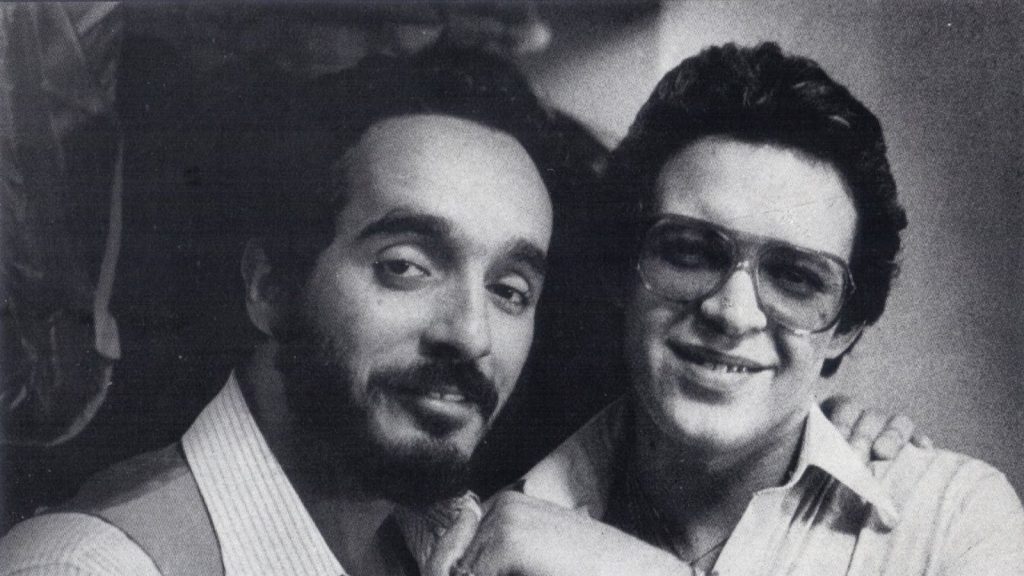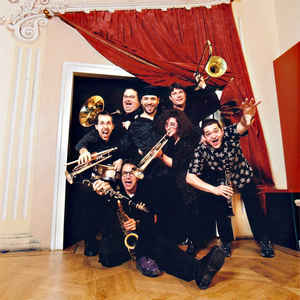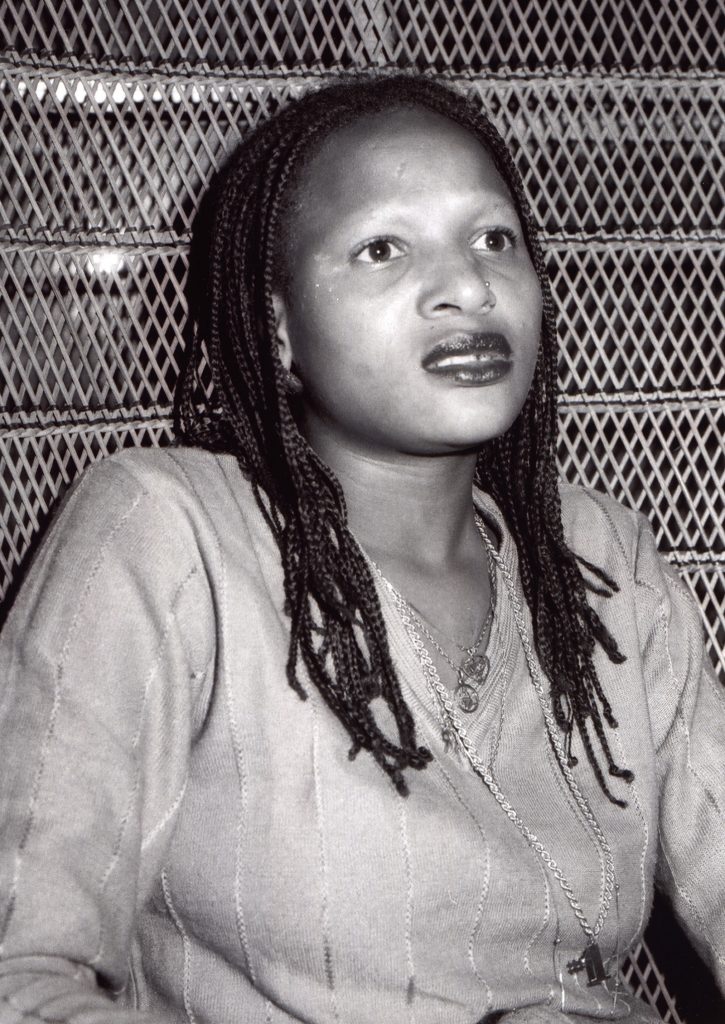I remember it so vividly.
It was the most perfect sunny day. I was on my way to go meet up with some friends at the park. Even though it was a relatively short drive, I still wanted to jam out to some feel-good tunes.
When I put on a random Spotify playlist of contemporary dancehall music, I heard that beautiful, familiar bassline from Nora Dean’s “Barbwire” blast through my speakers.
But then I realized that it wasn’t Dean’s song. It only sounded like it.

My Introduction to Major Lazer
I’ve been obsessed (and I mean obsessed) with music for as long as I can remember. I love anything from ragtime to shoegaze, mento to punk. So, my interest was immediately piqued when I heard this repurposing of Dean’s track.
I immediately pulled my car over to see what I was listening to. It was “Can’t Stop Now” by Major Lazer. I hadn’t yet heard of Major Lazer, so I had a lot of questions. Were they related to Nora Dean? Were they Jamaican? Why were they using this specific bassline?
I loved Major Lazer’s repurposing of “Barbwire,” so I began to listen to them non-stop. That’s when I noticed that this was a common theme for them. I quickly learned that what they were doing was called “sampling,” where artists borrow pieces from past songs and incorporate it into their own new track.
As I learned, sampling in Jamaican music culture was and is a nod to the artist they sample.
Sampling: Then & Now
Jamaican artists have sampled from one another since the 1960s, when the Jamaican music scene blossomed. Sampling is a “call and response” between the originator and the sampler. It’s when you take a part of a song that you really like, whether the beat, part of the lyrics, or some other part, and re-work it into your song.
Major Lazer has successfully honored this tradition, sampling tracks from 1960s Jamaica to 1970s Panama to the House scene of the late ’80s. They aren’t the first or only contemporary artists to do this, though. Many artists, ranging from Pitbull to J.Lo to Parov Stelar sample from musicians of the past.
The History Behind the Songs
The following songs that I discuss are only what I’ve been able to pick out from Major Lazer’s diverse catalog. I know that there are many, many more influences in their songs that I am unaware of, so comment below if you recognize any other artists in the songs of Major Lazer!
In addition to a brief biography about the original artist(s) of the song, I’ve also included a playlist at the end of this post so you can listen along! I hope you enjoy your trip through the history of music! 🙂
Song: “Can’t Stop Now,” Major Lazer (2009) //
Sampled from: “Barbwire,” Nora Dean (1970)

Born Letetia Leonora McClean (1944-2016), Nora Dean was a Jamaican reggae singer who also sang gospel later in her life. She was born in Spanish Town, Jamaica in 1944. Sometime in the late 1960s, perhaps around 1967 or 1968, Dean joined The Soulettes. Dean sang alongside Cecile Campbell and Rita Anderson (who later married Bob Marley). Dean left the group in 1969 due to a serious illness and was replaced by Hortense Lewis. Before pursuing a solo career, Dean also recorded with The Ebony Sisters. She also contributed backing vocals to Jimmy Cliff’s 1973 album Untitled.
Dean had met Lee “Scratch” Perry when she was with The Soulettes and decided to approach him to assist her with her solo career. In 1970, Dean had her first hit song “Barbwire.” The beat for Dean’s song was based off of Slim Smith & The Techniques’ song “You Don’t Care” from 1969.
(Side note: The Techniques song was actually a cover of the song legendary musician Curtis Mayfield wrote for his band, The Impressions, in 1963. The song was originally called “You’ll Want Me Back” and was a B-side to the hit “It’s Alright.” The Techniques covered the Impressions’ “You’ll Want Me Back” and changed the title of the song to “You Don’t Care” which had a rocksteady Jamaican reggae beat.)
In Dean’s most famous song, the original lyrics for “Barbwire” were actually much more sinister than what was eventually recorded.

Dean originally wanted to recount the discomfort and lack of safety she experienced walking through a rough area in Kingston. The barbwire originally referenced a man she would see everyday on her walk home who wore barbwire on his head.
Sound engineer Byron Smith, however, thought that it would sound better if the song said “barbwire in his underpants” instead of “barbwire on his head.” What was meant to be a true-to-life recounting of being a solitary woman who was terrified to walk through a part of town became a childish recounting from a young girl to her mother of a man’s sexual advances towards her.
Dean was furious.
In the original lyrics, “I got a brick in my back, I lick him hard upon his head” was not meant to be sexual. “Lick,” in this context, was actually meant as “hitting” him on his head. As a woman who has been catcalled and experienced discomfort in certain situations because of men, it’s extremely disappointing and sad to know how that the context of this song was changed so drastically. One does have to wonder, though, if the song would have been as successful, or if it even would have been recorded.
Dean is quoted as remembering how she worked four hours voicing the track, though in the end, they went back to the first take. She was paid 30 pounds over 9 months for this song.
To date, the song has sold over 13 million copies worldwide. Dean, however, never made any money off this quintessential reggae track other than the 30 pounds she was originally paid.
This is, unfortunately, a common experience for Jamaican recording artists, particularly women.
Song: “Come Onto Me,” Major Lazer & Sean Paul (2014) // Sampled from: “La Murga,” Willie Colón, Hector Lavoe, and Yomo Toro (1973)

While “La Murga” is typically labelled as a classic salsa y tropical song, it actually isn’t salsa at all. “La Murga” actually references a Panamanian dance that is stylistically similar to dances from Argentina as well as Uruguay. The murga is characterized as relying heavily on percussion instruments while also having a fast, upbeat tempo.
Panamanian trumpeter Manuel Consuegra López and Ramón Fajardo are credited with inventing and debuting the murga. In 1952, the pair played the Carnival de las Tablas where they debuted the dance style. Since then, the murga has become a staple at large gatherings of people, namely carnivals.
“La Murga” by Willie Colón and Hector Lavoe was released on their first album, Asalto Navideño. It was produced by New York-based Fania Records in 1971. At the time, Willie Colón was 21 years old. Hector Lavoe, who was born in Puerto Rico, was 25 at the time of recording. Throughout their rocky relationship, the pair recorded 14 albums.
Since it’s release in 1971, “La Murga” has remained a popular song. In 2017, a band named Puerto Candelaria released a cover of “La Murga,” which was met with great reviews. Reviewers eagerly noted how their version was created “tastefully” and “respectfully” to the song created by Colón and Lavoe.
Song: “Jessica,” Major Lazer feat. Ezra Koenig (2013) // Sampled from: “Satisfaction,” Carl Dawkins (1970)

Carl Dawkins was born in 1948 in St. Catherine, Jamaica, West Indies. His father was a drummer and played with the renowned Sonny Bradshaw Band in Jamaica. Dawkins’ family moved to Kingston and, while there, a young Dawkins rubbed elbows with premiere Jamaican musicians, including The Sterlings, Roland Alphonso, Little G, and Earl Kinnear.
He eventually scored an audition with J.J. Johnson. It was with Johnson that Dawkins recorded his super successful debut song, “Baby I Love You” (no relation to The Ronettes hit 1963 song).
Dawkins’ song landed at number four on the charts. He also recorded his very popular song, “Hard Times.” After this, however, Dawkins was arrested for possession of marijuana and served 8 months in jail. Funnily enough, though, Dawkins was in jail at the same time as Lord Creator, Bunny Wailer, and Toots Maytal…to be a fly on that wall!
Once he got out of jail, Dawkins began recording music with Johnson again, but did not meet the same level of success he had achieved before incarceration.
He recorded “Satisfaction” in 1970 with Johnson, which sold over 80,000 copies! By this time, Dawkins was known as Ras Carl Dawkins, with Ras being short for Rastafarian. “Satisfaction” did extremely well, staying at the top of the charts for over 15 weeks!
Like most other Jamaican musicians, Dawkins has consistently recorded music throughout his life. Also, like other Jamaican artists, he has not earned much money from his songs.
Song: “Mary Jane,” Major Lazer (2009) //
Sampled from: “Liebermann Funky Freylekhs,” Frank London’s Klezmer Brass Allstars (2005)

Frank London is a New-York based trumpeter. He leads Frank London’s Klezmer Brass Allstars. Klezmer is a genre that is played at celebratory events, like marriages, by Ashkenazi Jews. Klezmer is a combination of two Hebrew words, kli (meaning tool, utensil, or instrument) and zemer meaning melody. Together, k’li zemer means “vessel(s) of music” or “musical instrument.”
Frank London is a key member of the Hasidic New Wave; a genre that fuses traditional Hasidic musical styles with elements of jazz, funk, and even acid rock.
“Liebermann Funky Freylekhs” was released in 2002 on the album Brotherhood of Brass by Piranha Records. Piranha Records is an independent record label based in Berlin, Germany that focuses on producing “African, Gypsy and Jewish music – everything the Nazis hated.”
London is involved with a number of Klezmer bands, most prominently The Klezmatics which was started in 1986.
Song: “Que Calor,” Major Lazer feat. J. Balvin (2019) //
Sampled from: “Curura,” Totó La Momposina (1993)

Sonia Bazanta Vides was born August 1, 1940 in Talaigua Nuevo, Bolivar, Colombia. Vides’ family consisted of musicians dating back 5 generations. Her father was a drummer and her mother was a singer and dancer.
In her village of Talaigua, young Vides would perform songs and rhythmic chants to accompany the monotonous daily tasks like grinding corn or scrubbing clothes. The rhythmic chanting, sometimes consisting of salacious lyrics, would spice up the otherwise mind-numbing monotony of the repetitive tasks.
Vides began her professional music career in 1969. It was then that she started going by her stage name, Totó La Momposina. Sonia’s ancestors hail from the village of Talaigua which is located on an island called “Mompos,” hence ‘La Momposina.’
She started performing mostly in Colombia, but she quickly gained popularity and began performing across Latin America, as well as in the United States and Europe.
Song: “Sound Bang,” Major Lazer (2014) //
Sampled from: “Bam Bam,” Sister Nancy (1982)

I could be wrong, but I believe that no other reggae song has been sampled as many times as Sister Nancy’s 1982 classic version of “Bam Bam.” What’s funny, though, is that her song sampled other previous hits in reggae history.
Born in Kingston, Jamaica, Ophlin Russell, better known as Sister Nancy, was one of 15 children.
The words “bam bam” that Sister Nancy sings in her version of “Bam Bam” is actually a sampling of Toots & the Maytals (then, called The Maytals) 1966 song of the same name. In the spirit of Jamaican sampling, Sister Nancy also sampled her main beat from a well-known reggae song, “Stalag 17” by Ansel Collins in 1973.
Sad news about this incredibly popular song, though: Ophlin doesn’t see a dime of the profits.
As I’ve already mentioned, this is a common occurrence in the music industry, but even more so in the Jamaican scene. Ophlin didn’t know that her song was at all popular in the United States, however, her producer knew just how popular the song was. When Ophlin moved to the United States, she quickly learned just how popular her song was, but when she tried to reach out to her producer, he never answered or returned her calls.
Like I said, this wasn’t an uncommon occurrence, but it doesn’t make it any less shitty of a thing to do to artists.
Song: “Watch Out for This (Bumaye),” Major Lazer feat. Busy Signal (2013) //
Sampled from: “María Lionza,” Willie Colón and Rubén Blades (1978)

So, we already discussed Willie Colón while looking at “Come Onto Me,” but now we’ll look at his relationship with Rubén Blades.
Blades is a Panamanian singer who was born in 1948. Blades began his musical career by working in the mailroom of Fania Records in New York City. Shortly after working at Fania Records, Blades began collaborating with Willie Colón. Together, they wrote many hit songs including “Maria Lionza” which debuted in 1978.
Weird thing about this song, though…it’s written about the deity, Maria Lionza.
Maria Lionza is a Venezuelan deity of female fertility, love, peace, and nature. This song details who she is and where she resides. The cult of Maria Lionza is a mix of African, indigenous, and Catholic beliefs. Followers of the cult are primarily located in Venezuela as it is predominantly Roman Catholic. The Catholic Church, however, disapproves of the followers of Maria Lionza.
What Other Songs Can You Think of?

I know I don’t have a comprehensive list of ALL of the musical influences in Major Lazer’s work, but that’s why I need your help. Can you pick out any other influences in their songs? Let me know in the comments! 🙂
And also, what other artists have you noticed sampling from music history? (Hint: start with Pitbull’s “Culo” and then listen to Cordel ‘Scatta’ Burrell’s “Coolie Dance” for a solid start. I included both songs in my playlist!) Let me know in the comments! 🙂
https://open.spotify.com/user/aa263331/playlist/2pHf0xomNoBA09AgKvppEs?si=clZCOIfnRyW859wxS1z_CA


Leave a Reply